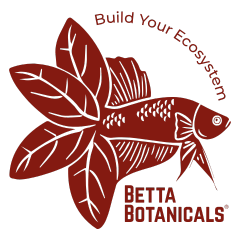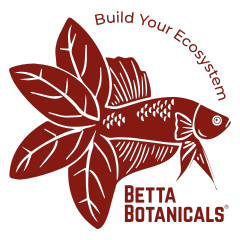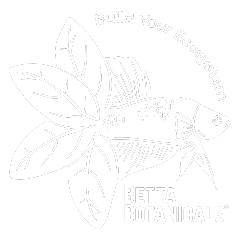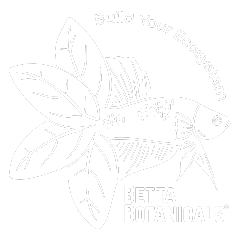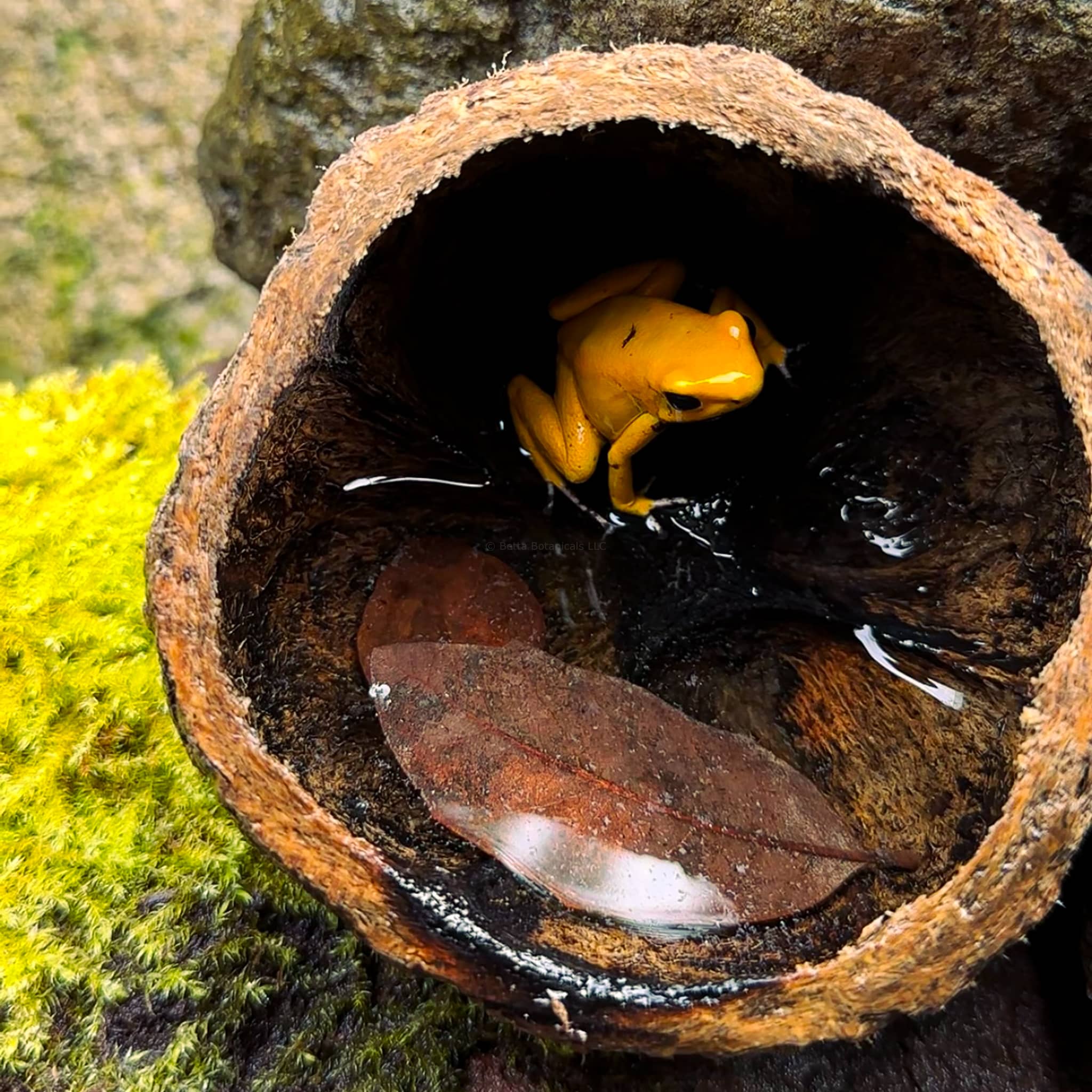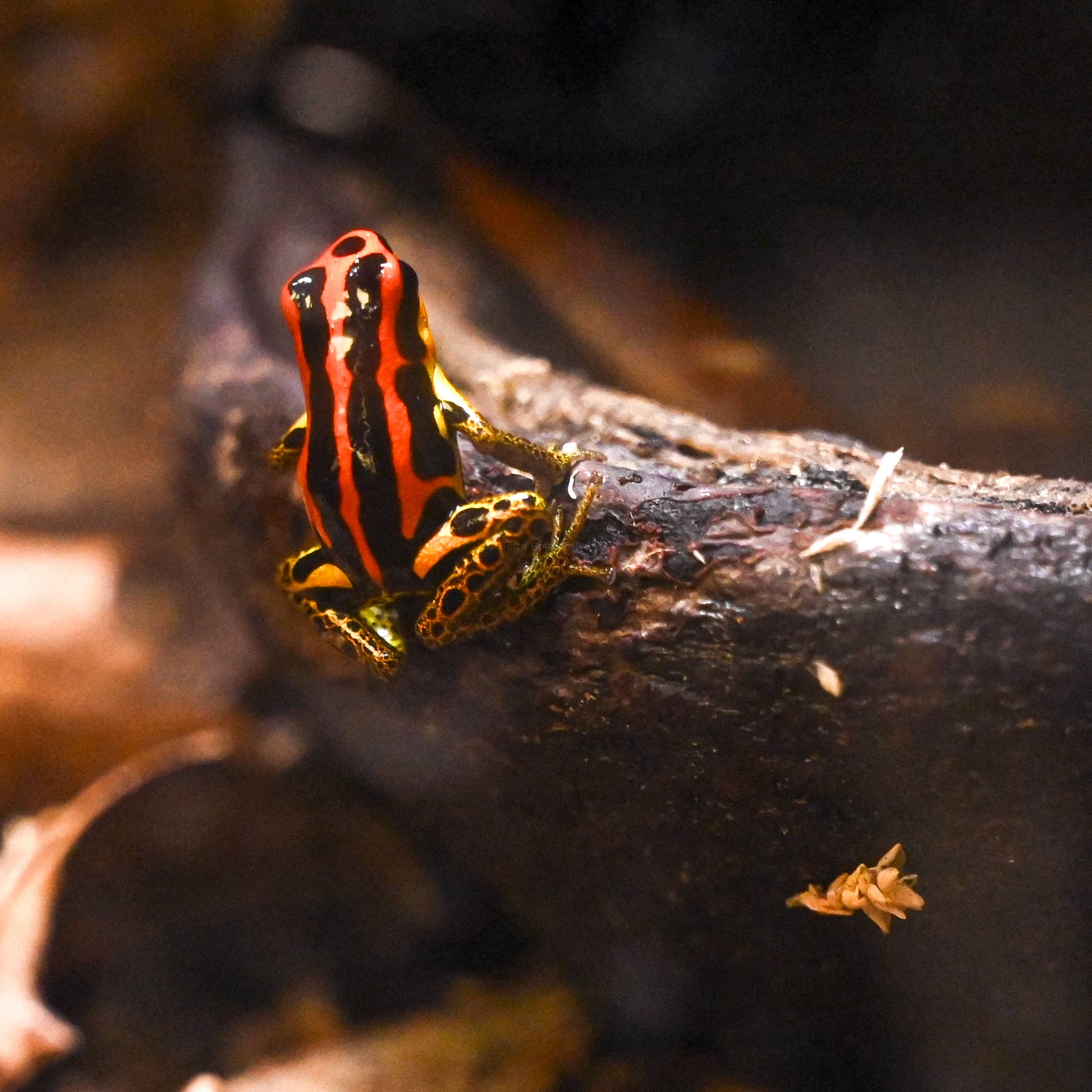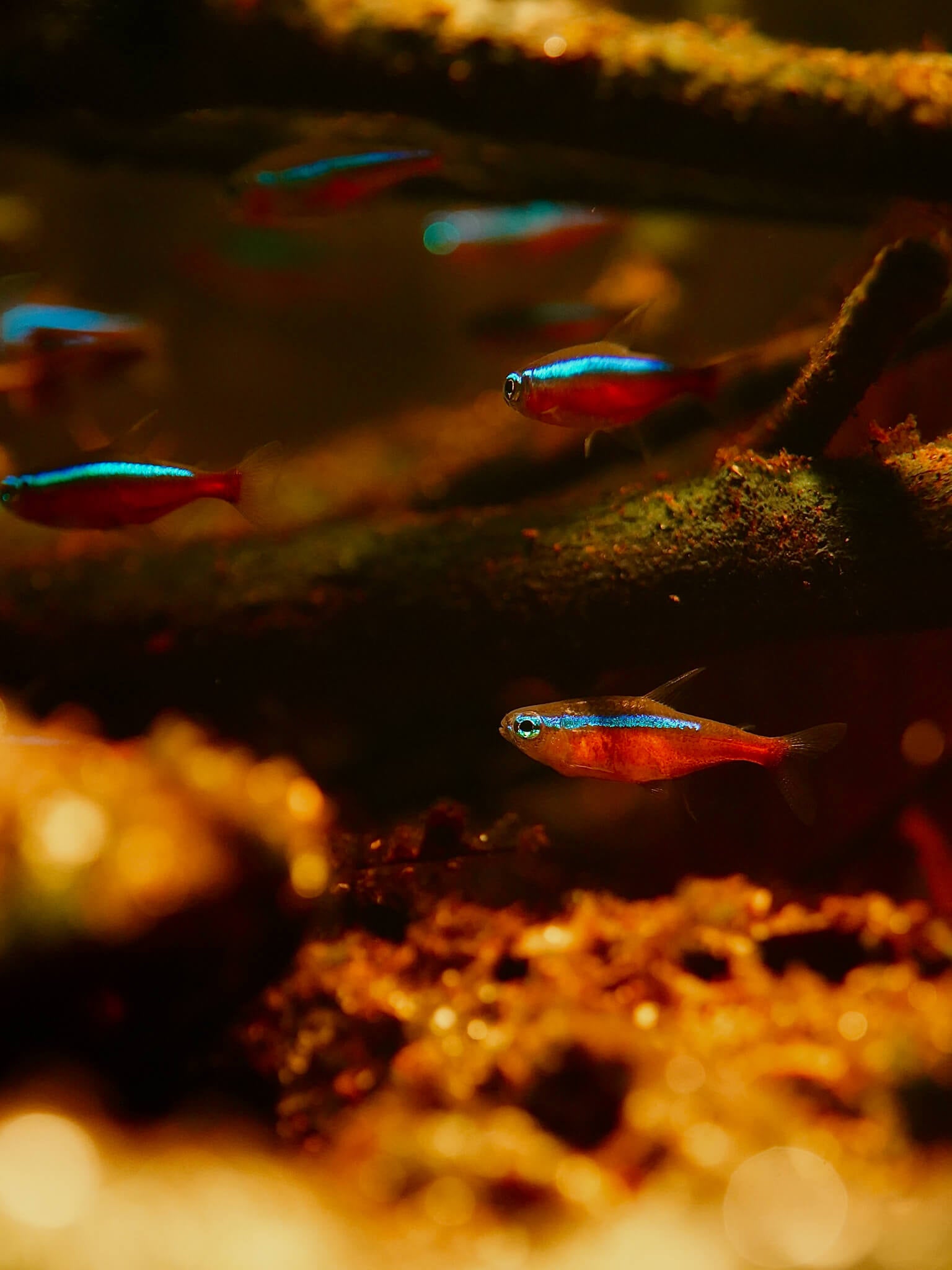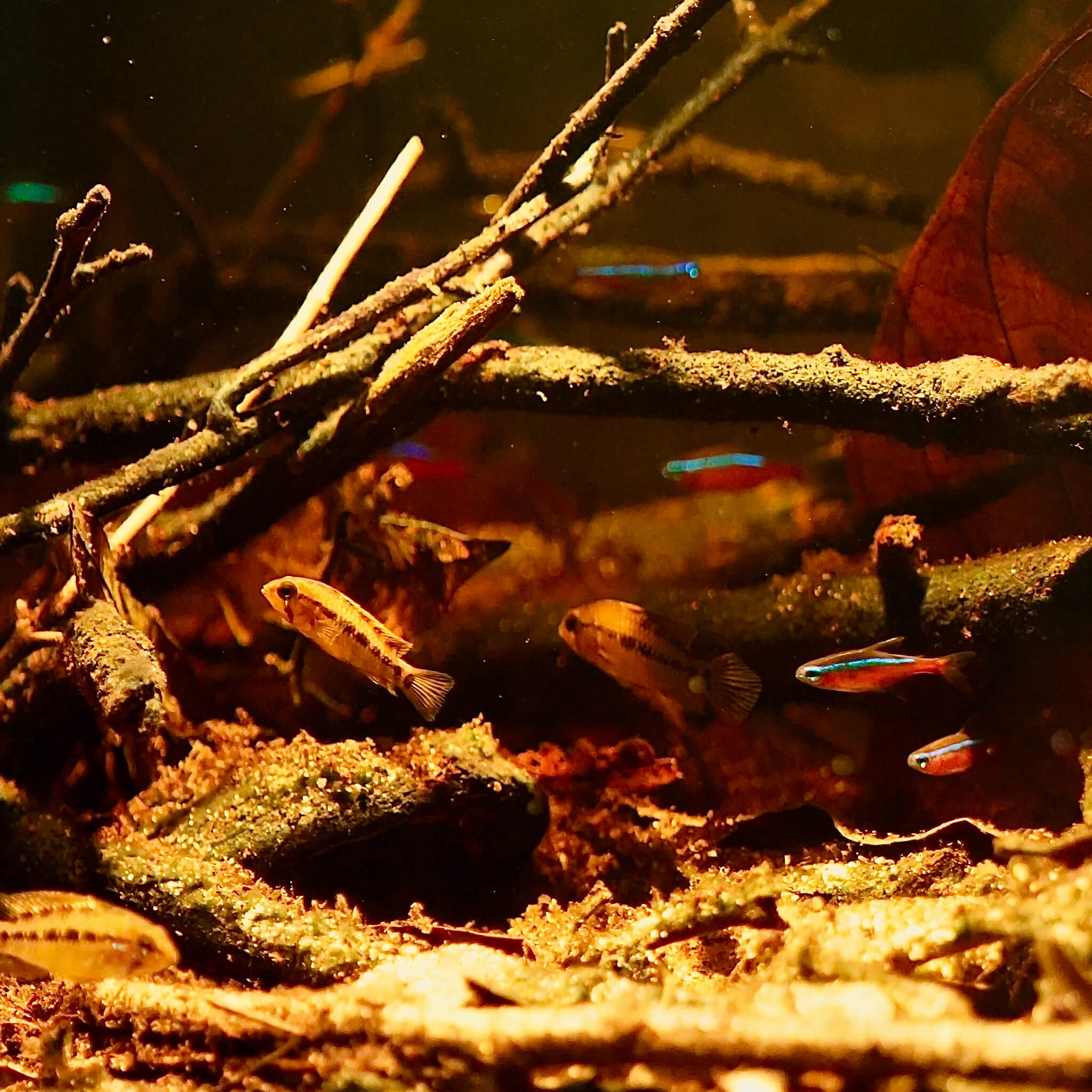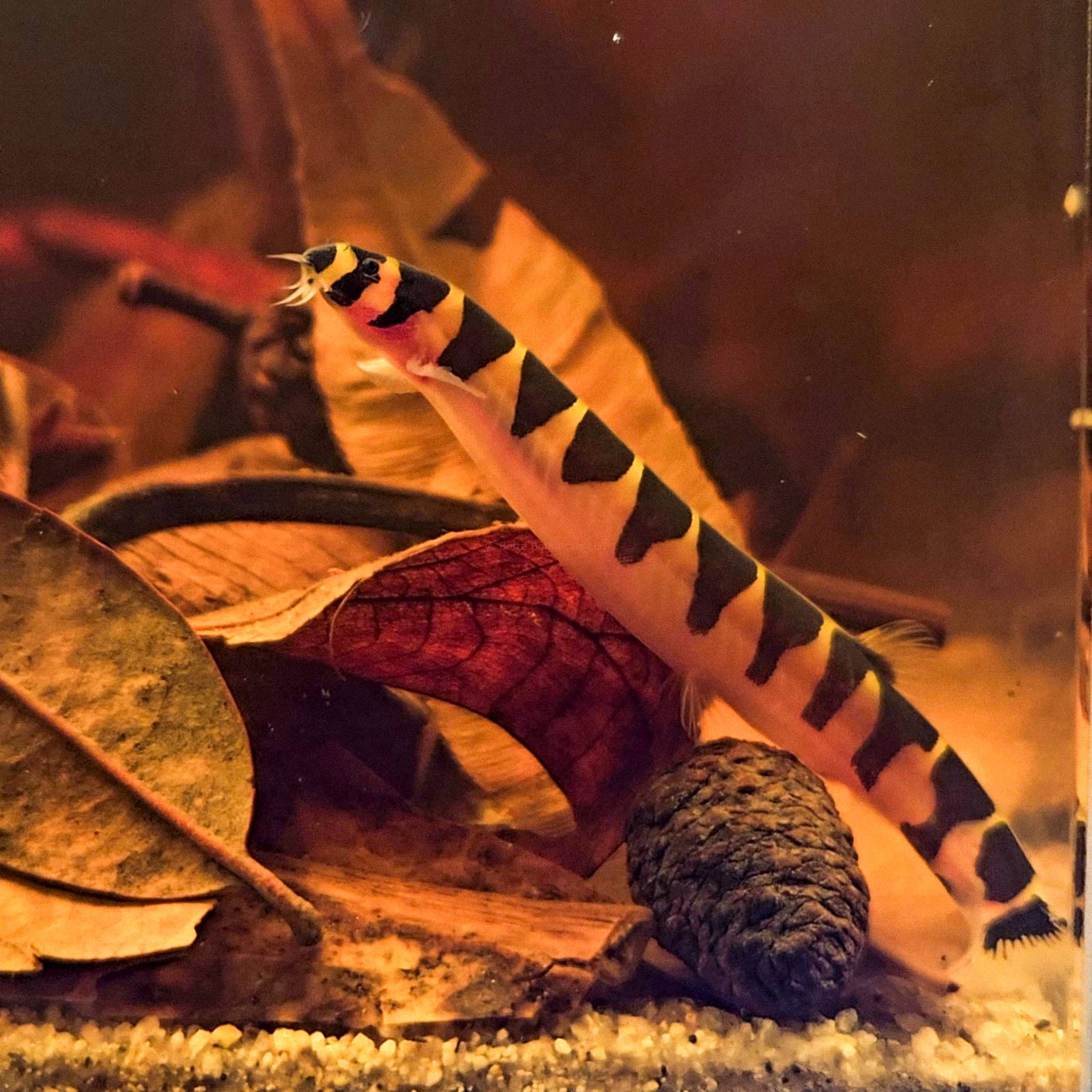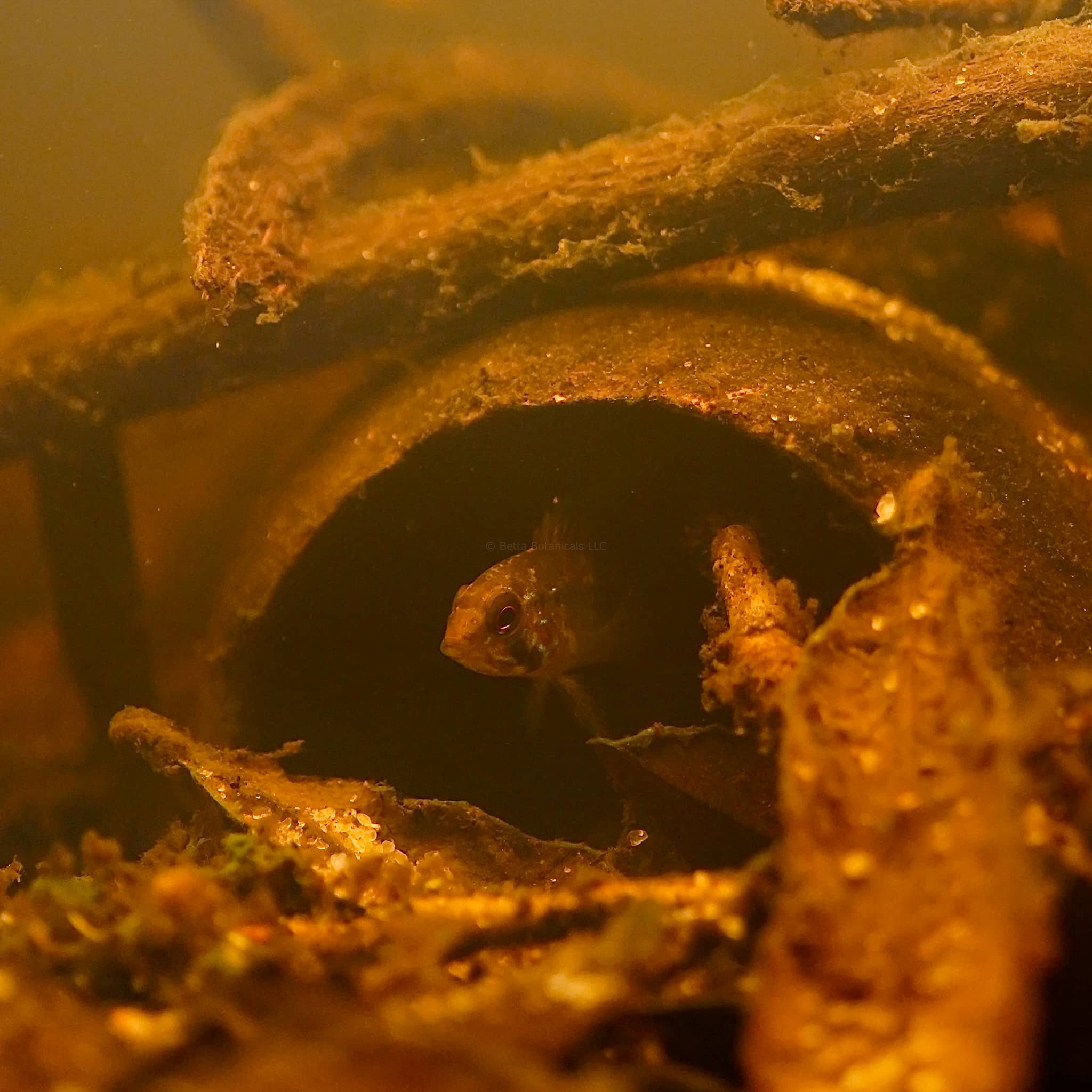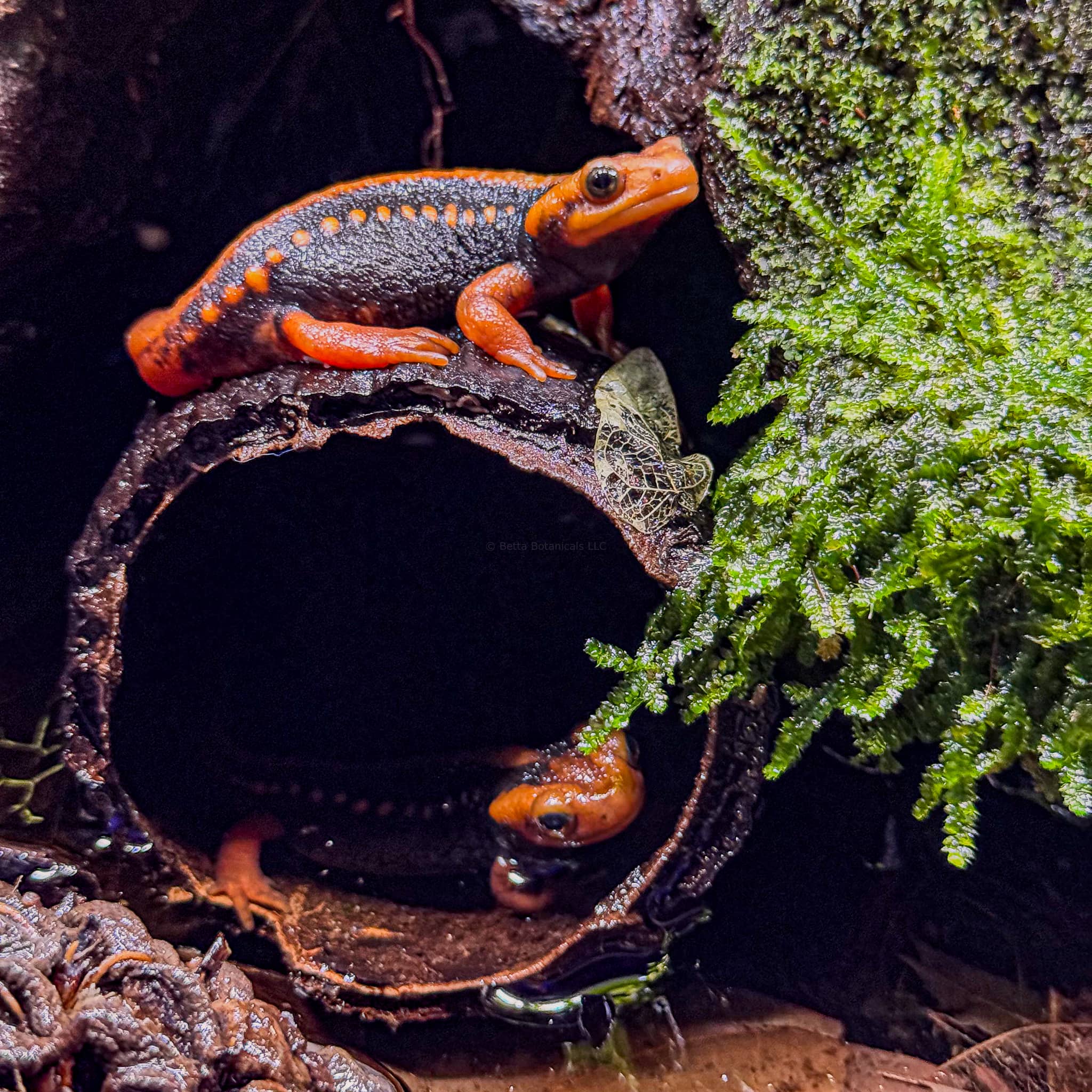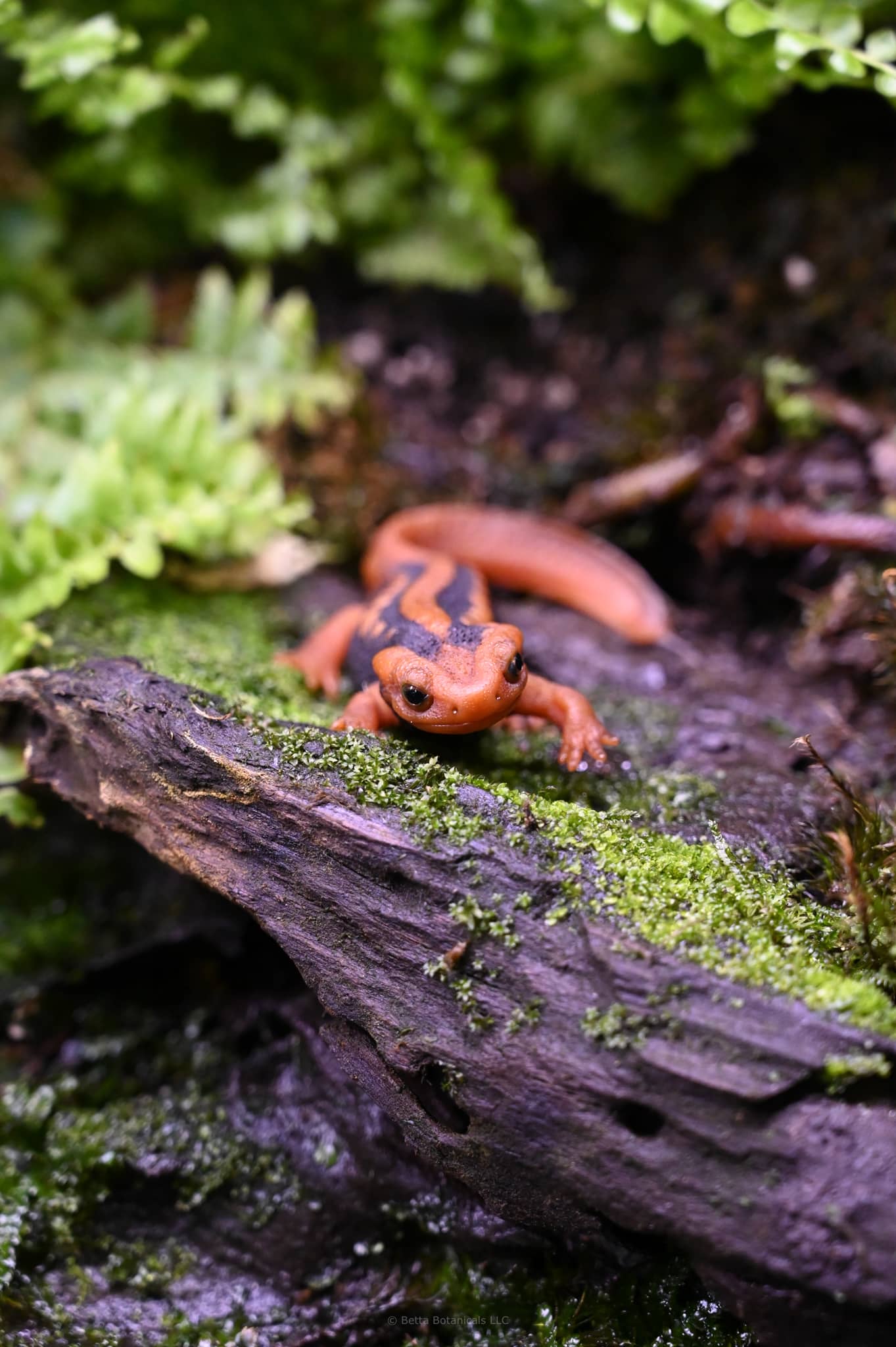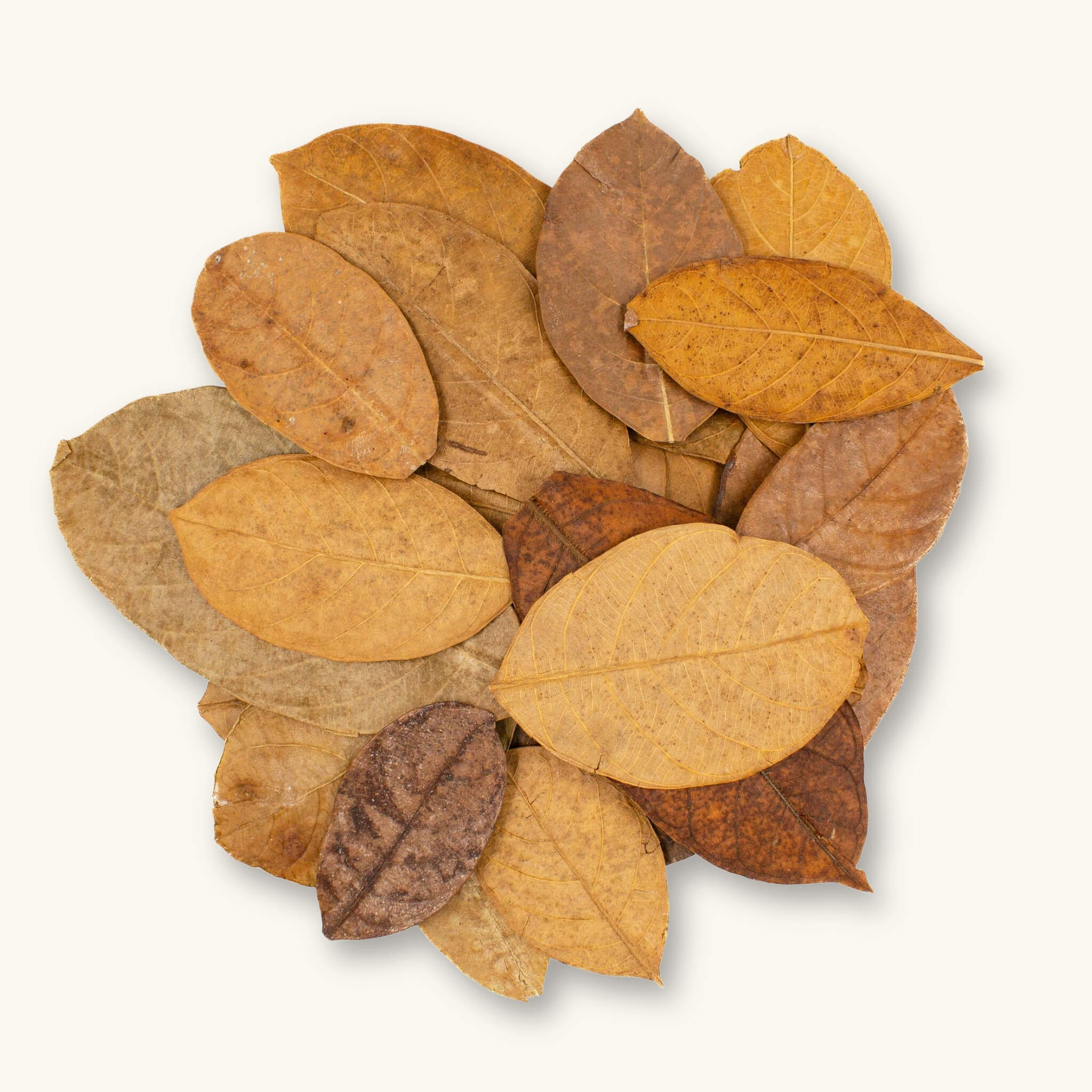
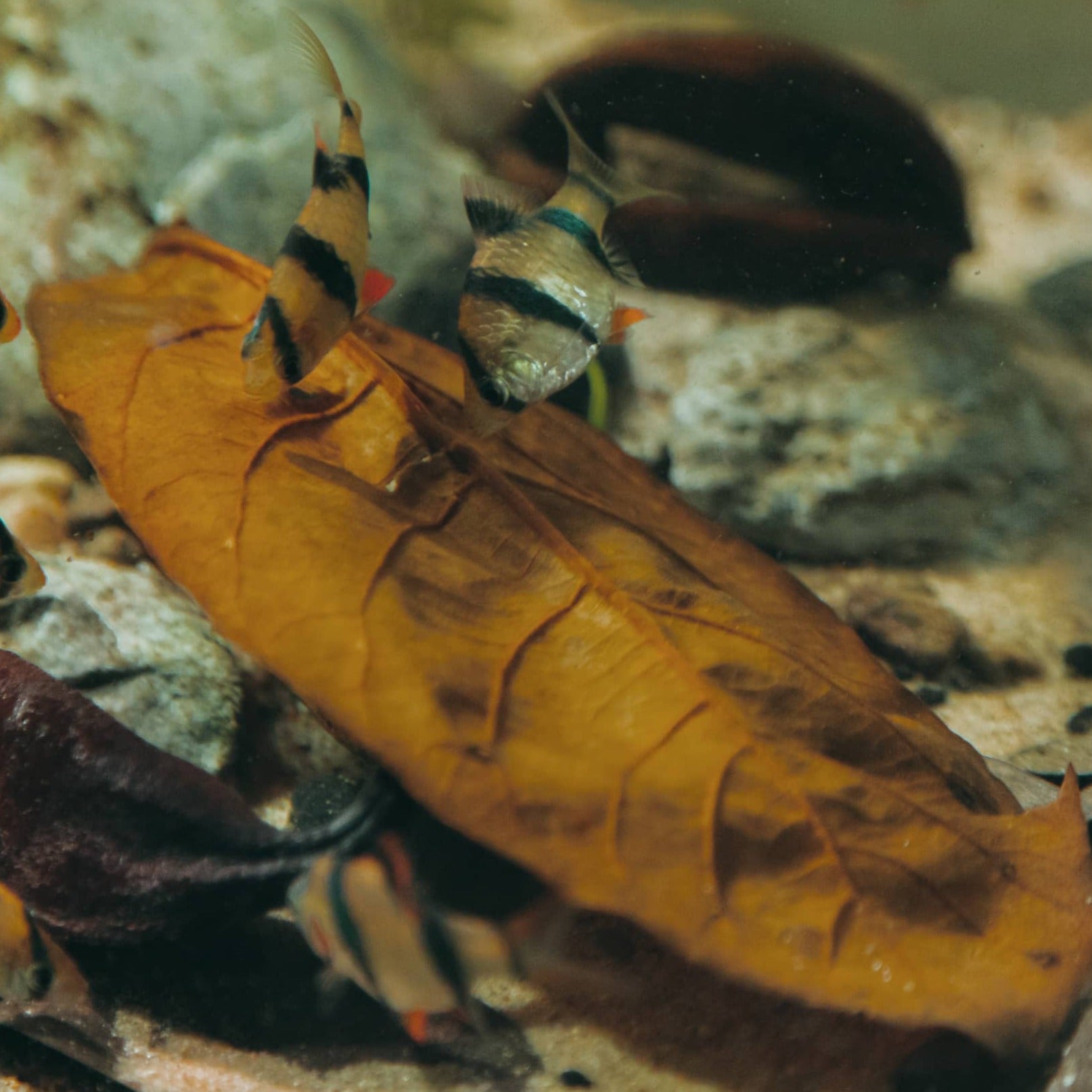
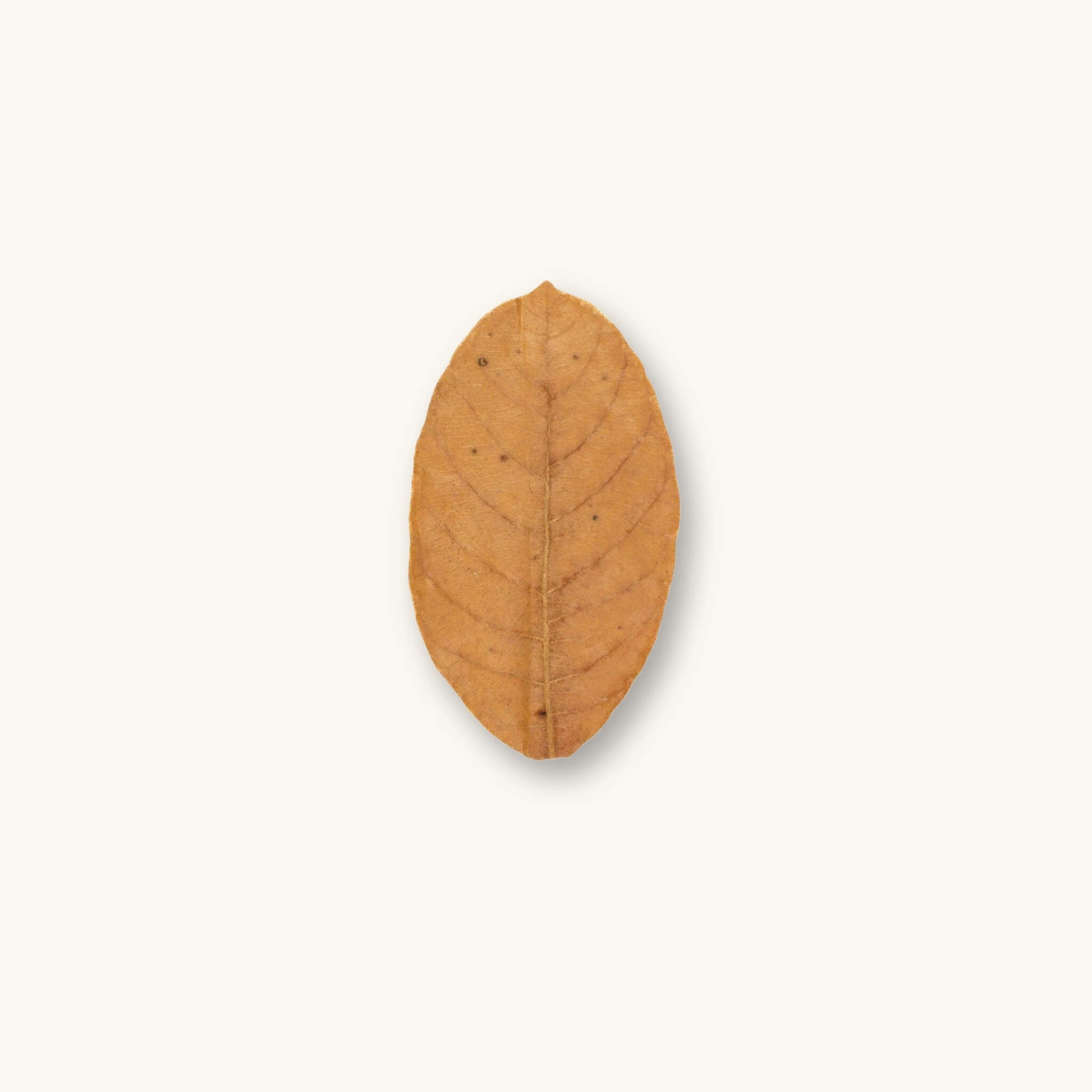
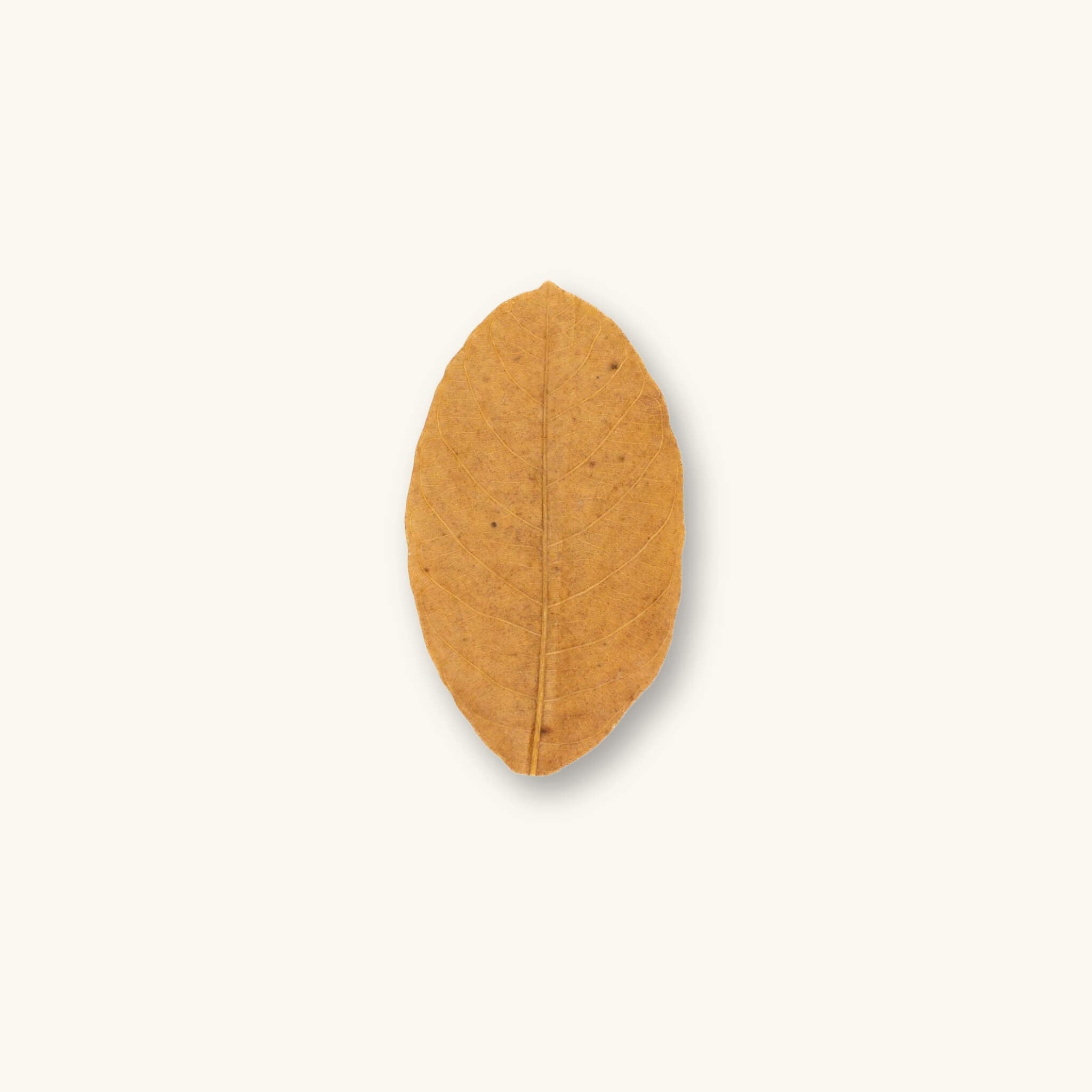
Jackfruit Leaves | Artocarpus heterophyllus
Jackfruit Leaves on the Surface:
Jackfruit Leaves are durable, slow-decomposing leaves well-suited to botanical method, blackwater, and biotope aquariums. Their firm cuticle resists rapid breakdown, providing surfaces for biofilm and fungi—the baseline foods that shrimp, snails, and small fishes graze. As they condition, they release low amounts of tannins that softly tint water and support a stable microbial community. The best part of these leaves is toward the end of their existence within the ecosystem, they leave behind a beautifully detailed leaf skeleton.
Essential Details
- Tannin Level: Low
- Tint Color: Light brown
- Durability: High — slow to soften; lasting months in most systems
- Habitat Location: Sri Lanka, Indonesia, & USA
- Optimal For: Dart Frogs, Geckos, Bettas, rasboras, gouramis, tetras, shrimp, snails, and small catfish
- Use with Caution: Optimal for all species and critters
- Size Range: ~3–6 inches (natural variation in shape and curl)
- Quantities: ~25 leaves per compostable bag; size and coloration vary naturally
Jackfruit Leaves for Aquariums & Vivariums
Jackfruit leaves are one of the most popular leaf litter varieties used in the Botanical Method, Blackwater, and Biotope Aquarium and Vivarium. They act as a ‘generic tropical,’ integrating into more niche habitat-specific botanicals to seamlessly blend the familiar and the exotic. As the leaves slowly soften, they cultivate biofilm and fungi that provide supplemental nutrition for shrimp and snails while seeding the broader food web. Their low tannin release gently conditions soft water and helps recreate natural water chemistry without overwhelming smaller systems.
The tissues of Artocarpus leaves contain natural polyphenols and related compounds that may exhibit mild antibacterial activity. They are especially popular in raising rasping fishes like plecos, Farlowella, and Otocinclus.
In vivariums, this leaf litter resists immediate decomposition and collapse, offering cover and humidity buffering within the leaf-litter layer. Over time, fragments become part of the perpetual substrate, improving moisture retention and microbial diversity for isopods and springtails.
Beneath the Leaves: Artocarpus heterophyllus in the Wild
Native to humid tropical Asia, the jackfruit is a canopy-forming evergreen with thick, leathery leaves. On the forest floor, these leaves decompose slowly, feeding fungi, invertebrates, and soil microbes while creating a resilient litter bed. The addition of Jackfruit Leaves provides the home ecosystem with that same slow, steady rhythm—letting Mother Nature lead the way as the system cycles, settles, and matures.
Sustainability Note:
This product’s packaging is home compostable. Just like the botanicals inside, it will break down naturally and return to the soil—because what supports your ecosystem should minimally impact our planet.
Not for human consumption. Preparation required.
This is a natural product—variation in color, shape, and texture is expected.

Jackfruit Leaves | Artocarpus heterophyllus
Home is getting more natural
While the aesthetic appeal of botanicals and tinted water can be quite attractive to us, the recreation of nature to emulate water conditions, feeding patterns, spawning displays, and territory building are the true benefits botanicals provide to our critters.
Botanical FAQs
Compostable Packaging Promise
Our packaging is designed to return safely to the Earth, just like the botanicals inside. Every bag is BPA- and Phthalate-free, GMO-free, and contains no animal products. Each meets ASTM D6400 composting standards, ensuring it can fully break down in a home compost bin.
What are the Fluffy White Growths on my Botanicals?
That’s biofilm and fungi—what we call the “goo phase.” It’s one of the clearest signs that your aquarium is alive and functioning. These growths wax and wane naturally as botanicals decompose. They’re harmless, even beneficial, and will disappear on their own once microbial populations stabilize.
Will botanicals lower the pH of my water?
That depends entirely on your source water. In very soft or RODI water, botanicals can gradually lower pH as tannins and humic substances accumulate. In medium to hard tap water, buffering capacity often resists these shifts, and you may not notice much change. At Betta Botanicals HQ, our very hard water (350+ ppm) shows almost no pH change unless we use botanicals like Alder Cones or Macaranga Leaves.
When should I replace leaves or pods in my tank?
We recommend allowing botanicals to fully break down into detritus, since this fuels microbial life and enriches the substrate. You can remove them once they stop tinting the water, but you’ll lose some of their ecological benefits. Each time you add new botanicals, follow proper preparation and observe your livestock until you learn your aquarium’s rhythm.
Are your products just for bettas?
Nope. Our botanicals are safe for almost all aquariums, terrariums, vivariums, and paludariums. The only exceptions are goldfish and axolotls, which may ingest small pods like alder cones or casuarina cones. For those species, we recommend large leaves such as Indian Almond, Loquat, or Jackfruit.
What are Tannins?
Tannins are natural compounds released by leaves, seed pods, and bark as they decompose in water. They soften water, gently lower pH, and create the characteristic tea-stained tint found in blackwater habitats. But their role goes far beyond color—tannins fuel beneficial bacteria, fungi, and biofilms, which form the foundation of a healthy ecosystem. They also offer mild antifungal benefits and help reduce stress in fish by replicating the natural conditions they’ve evolved in. At their core, tannins are plant-derived antioxidants that connect your aquarium to the same processes at work in wild flooded forests and streams.
